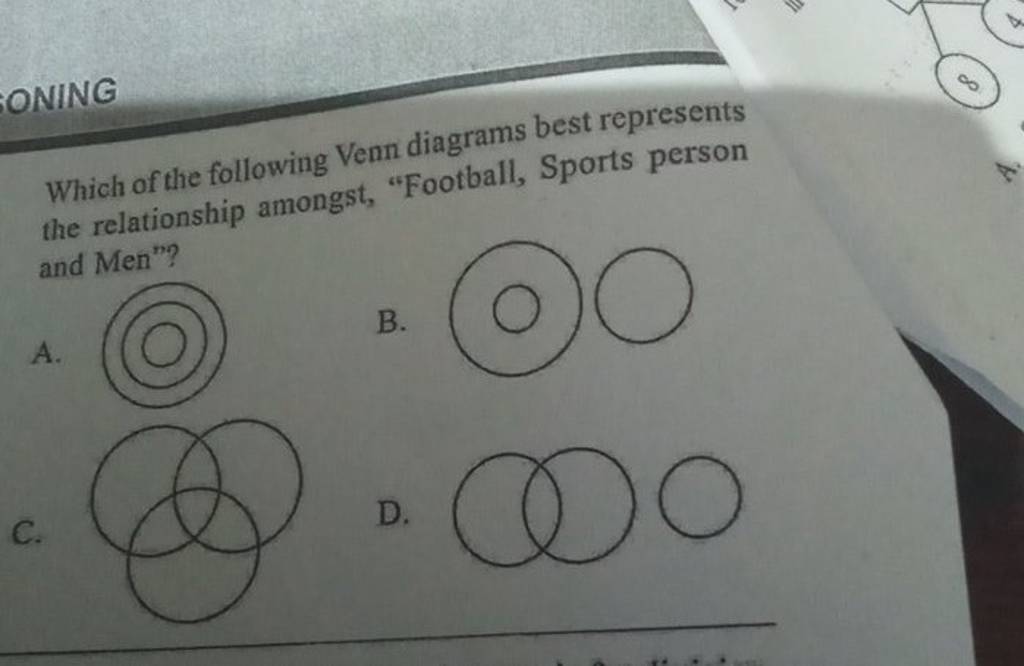The Fitness-Health-Wellness Triangle: Understanding Their Interconnection
The fitness health wellness triangle: understand their interconnection
Fitness, health, and wellness represent three distinct hitherto deep interconnect aspects of human wellbeing. While oftentimes use interchangeably in casual conversation, each term encompasses specific elements that, unitedly, create a comprehensive picture of optimal living. Understand how these concepts interact can transform your approach to self-care and personal development.
Define the core elements
What’s fitness?
Fitness principally refers to the body’s physical capabilities and performance. Itencompassess several components:
-
Cardiovascular endurance
the heart and lungs’ ability to deliver oxygen during sustained physical activity -
Muscular strength
the amount of force muscles can generate -
Muscular endurance
how long muscles can perform without fatigue -
Flexibility
the range of motion in joints -
Body composition
the ratio of lean mass to fat mass
Fitness is measurable and can be improved through target exercise programs, make it peradventure the virtually tangible of the three concepts.
What’s health?
Health extend beyond the absence of disease to encompass optimal functioning across multiple bodily systems. Key aspects include:
-
Physical health
proper functioning of bodily systems -
Absence of illness
freedom from disease and chronic conditions -
Physiological markers
normal blood pressure, cholesterol levels, blood sugar, etc. -
Immune function
the body’s ability to defend against pathogens -
Organ health
optimal functioning of vital organs
Health represent the baseline condition necessary for daily functioning and longevity.
What’s wellness?
Wellness is the broadest concept, encompass a holistic approach to life quality across multiple dimensions:
-
Physical wellness
maintain a healthy body through nutrition, exercise, and sself-care -
Mental wellness
psychological wellbeing, stress management, and cognitive function -
Emotional wellness
understanding and managing emotions efficaciously -
Social wellness
build and maintain meaningful relationships -
Spiritual wellness
find purpose and meaning in life -
Environmental wellness
create and maintain healthy living spaces -
Occupational wellness
find satisfaction and balance in work
Wellness represent a proactive, conscious approach to live advantageously in all dimensions of life.
The interconnection: how they influence each other
Fitness as a foundation for health
Regular physical activity straight impact almost every aspect of physical health:

Source: dailypeter.com
- Cardiovascular exercise strengthen the heart, improve circulation, and lower blood pressure
- Strength training build bone density, improve metabolism, and enhance joint stability
- Flexibility work reduce injury risk and improve mobility
- All forms of exercise help regulate blood sugar and improve insulin sensitivity
- Physical activity boost immune function and reduce inflammation
The relationship work both ways — good health enable more effective fitness pursuits. When you’re free from illness and injury, you can train more systematically and intensely, create a positive feedback loop.
Health as a gateway to wellness
Health serve as the foundation upon which broader wellness can be built:
- Physical health provide the energy need for social engagement and productive work
- Balanced hormones and brain chemistry support emotional regulation and mental clarity
- Proper nutrition affect cognitive function and mood stability
- Adequate sleep enhance decision-making and stress management
- Freedom from chronic pain allow for greater life enjoyment
When basic health needs are meet, individuals can direct their attention toward higher level wellness pursuits like personal growth, meaningful relationships, and purpose drive activities.

Source: reluctantlowcarblife.com
Wellness practice that enhance fitness and health
Many wellness practices flat contribute to improved fitness and health outcomes:
- Stress management techniques reduce cortisol levels, improve recovery and immune function
- Mindfulness practices enhance body awareness, lead to better exercise form and injury prevention
- Social connections provide motivation and accountability for fitness goals
- Find purpose in physical activity increase adherence and enjoyment
- Environmental wellness choices, like spend time in nature, can increase physical activity levels
- Work-life balance create time for regular exercise and proper recovery
This three-way relationship creates a dynamic system where improvements in one area course enhance the others.
The synergistic effects: case examples
The exercise mood performance cycle
Consider how a regular exercise routine (fitness )lead to improved mood through endorphin release ( (llness ),)hich so enhance immune function ( he(th ). T)s improvimprovesh status allow for more consistent training, create an upward spiral of wellbeing.
Research systematically show that people who exercise regularly experience:
- 30 40 % reduction in depression symptoms
- Improved sleep quality
- Enhanced cognitive performance
- Reduced anxiety levels
- Stronger immune response
These benefits cross all three domains, demonstrate their interconnect nature.
The nutrition energy activity connection
Proper nutrition (health )provide optimal energy levels and recovery ( (tness ),)hich contribute to better mood and cognitive function ( we(ness ). T)s enhanced state of wellness frequently lead to better food choices, continue the positive cycle.
Specific examples include:
- Adequate protein intake support muscle repair and growth
- Complex carbohydrates provide sustained energy for exercise
- Omega-3 fatty acids reduce inflammation and support brain health
- Hydration affect exercise performance, cognitive function, and mood
- Micronutrients support immune function and recovery
Each nutritional choice simultaneously affect multiple aspects of the fitness health wellness triangle.
Practical applications: build a balanced approach
Create a holistic fitness plan
An unfeignedly effective fitness regimen acknowledge health limitations and wellness goals:
- Include variety to address all components of fitness (strength, endurance, flexibility )
- Incorporate appropriate progression base on current health status
- Schedule adequate recovery to prevent overtraining and immune suppression
- Choose activities that bring joy and satisfaction, not upright physical results
- Consider social elements like group classes or training partners
This approach ensure that fitness pursuits enhance instead than detract from overall wellness.
Preventive health strategies
Proactive health management support both fitness performance and wellness:
- Regular health screenings to catch potential issues other
- Appropriate supplementation base on individual needs
- Adequate sleep hygiene practices
- Stress management techniques
- Injury prevention strategies
These practices create a strong foundation for fitness pursuits while contribute to overall wellness.
Integrative wellness practices
Comprehensive wellness approaches course incorporate fitness and health elements:
- Mind body practices like yoga and tai chi that combine physical activity with mental focus
- Nature base activities that provide physical challenge, stress reduction, and spiritual connection
- Community base fitness programs that address social wellness while improve physical health
- Mindful eat practices that enhance nutrition while foster a healthy relationship with food
- Purpose drive physical challenges that connect fitness goals with deeper meaning
These integrative approaches recognize the inseparable nature of fitness, health, and wellness.
Overcome common obstacles
When health limitations affect fitness
Health challenges needn’t prevent fitness improvements:
- Modify exercise selection base on current limitations
- Focus on progressive improvement quite than comparison to others
- Work with healthcare providers to develop appropriate fitness plans
- Emphasize consistency over intensity
- Celebrate non scale victories and functional improvements
Many health conditions really improve with appropriate physical activity, create a path toward better overall wellness.
When wellness need conflict with fitness goals
Sometimes fitness pursuits can undermine wellness if not decently balanced:
- Recognize when training volume compromises sleep or relationships
- Adjust goals during high stress life periods
- Incorporate adequate rest and recovery
- Maintain perspective on the role of fitness within overall life satisfaction
- Practice flexibility in routines to accommodate other wellness needs
True fitness supports instead than detracts from overall wellness.
The future: integrate approaches to fitness, health, and wellness
Technology and integration
Modern technology progressively recognizes the interconnected nature of these domains:
- Wearable devices that track not lonesome activity but besides sleep, stress, and recovery
- Apps that connect physical metrics with mood and energy levels
- Telehealth services that incorporate fitness coaching with medical oversight
- Ai drive recommendations that adjust fitness plans base on health markers and wellness reports
These technological advances help individuals see the connections between their choices across all three domains.
Professional integration
The professional landscape is evolved toward more integrate approaches:
- Medical professionals progressively prescribe exercise as medicine
- Fitness professionals obtain certifications in behavior change and wellness coaching
- Wellness practitioners incorporate evidence base physical activity recommendations
- Interdisciplinary teams provide comprehensive support across all domains
This integration reflects grow recognition that these areas can not be efficaciously address in isolation.
Conclusion: the unified approach
Fitness, health, and wellness represent three perspectives on the same fundamental goal: optimal human functioning and life experience. Quite than treat them as separate pursuits, recognize their interconnect nature allow for more effective and sustainable approaches to well bee.
When fitness activities support health outcomes and enhance overall wellness, they become sustainable lifelong practices instead than temporary fixes. Likewise, wellness practices that acknowledge the importance of physical health and fitness tend to be more effective and comprehensive.
By approach these three domains as an integrated system, individuals can create positive spirals where improvements in one area course enhance the others. This holistic perspective transforms the sometimes overwhelming pursuit ofwell beee into a cohesive journey toward a more vibrant, balanced, and fulfil life.
The virtually successful approaches to human wellbeing recognize that we can not separate the physical body from the mind, emotions, and spirit. By honor the interconnected nature of fitness, health, and wellness, we create the conditions for true thrive in all dimensions of life.



